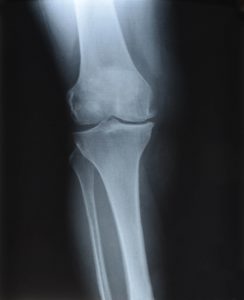Osteochondritis Dissecans of the Knee
Inflammatory pathology of bone and cartilage results in a condition called Osteochondritis Dissecans (OCD). Osteochondritis Dissecans can lead to necrosis (death) and fragmentation of bone and cartilage of the knee anatomy. Osteochondritis Dissecans of the knee shows symptoms very differently between children and adults. When seen in children, Osteochondritis Dissecans of the knee has the name of Juvenile Osteochondritis Dissecans. Genetics may also play a part in the development of Osteochondritis Dissecans. Osteochondritis Dissecans of the knee affects the thigh bone, or femur. Osteochondritis Dissecans of the knee often presents itself in young athletic children, while any adult can develop Osteochondritis Dissecans, especially with osteoarthritis.
SYMPTOMS OF OSTEOCHONDRITIS DISSECANS
The most common symptoms of Osteochondritis Dissecans:
- Aching pain
- Swollen Knee
- Cannot bear weight on knee
- Decreased range of motion
- Popping or locking in the joint
HOW TO CLASSIFY OSTEOCHONDRITIS DISSECANS
Stage I
Thickening of cartilage and a stable lesion
Stage II
Articular cartilage interrupted and a stable lesion low signal rim behind fragment showing that there is fibrous attachment
Stage III
Articular cartilage interrupted, unstable high signal changes behind fragment and underlying subchondral bone
Stage IV
Loose body unstable
HOW TO DIAGNOSE OSTEOCHONDRITIS DISSECANS
The orthopedic knee specialist performs a physical examination of the patient. If the doctor suspects the patient may have Osteochondritis Dissecans, they order diagnostic testing. If the x-ray does not show the suspected cartilage damage, the physician may order a bone scan to obtain additional information. During a bone scan, a physician injects dye into the blood stream and takes photos of the bones. The dye attaches to healing areas of bones or areas experiencing rapid changes. Bone scans can  detect the very early stages of Osteochondritis Dissecans of the knee.
detect the very early stages of Osteochondritis Dissecans of the knee.
HOW TO TREAT OSTEOCHONDRITIS DISSECANS
Surgeons typically attempt to treat Osteochondritis Dissecans using conservative treatment before resulting to surgical treatment. Non surgical treatments resolve roughly 50% of Osteochondritis Dissecans of the knee cases. Conservative treatment takes from 10 to 18 months.
Conservative treatment for Osteochondritis Dissecans includes:
- Rest
- Physical Therapy
- Injections
- Brace
- Crutches
If conservative methods do not work, the surgeon may opt for surgical intervention. The approach with surgery differs based on the severity of the injury. Most surgeons use an arthroscopic approach to treating Osteochondritis Dissecans. Arthroscopic means the surgeon performs surgery through small portals, one portal houses the camera while the other portals have tools interchanged though out them to perform the surgery. Due to the knee’s weight bearing properties, the surgeon will try everything to reattach the fragment back to the knee with pins or screws. If the surgeon cannot save the cartilage, the surgeon will remove the loose body and fill the hole with an allograft. The surgical methods may vary from surgeon to surgeon depending on the specific injury and the surgeons training and preferences. The surgeon may have to perform a Osteochondritis Dissecans of the knee surgery using an open approach if they cannot see the entire lesion arthroscopically.
IF YOU HAVE knee PAIN AND SUSPECT IT MAY BE FROM OSTEOCHONDRITIS DISSECANS of the knee, CALL 817-375-5200 or click here TO schedule an appointment with a SPECIALIST TODAY!


